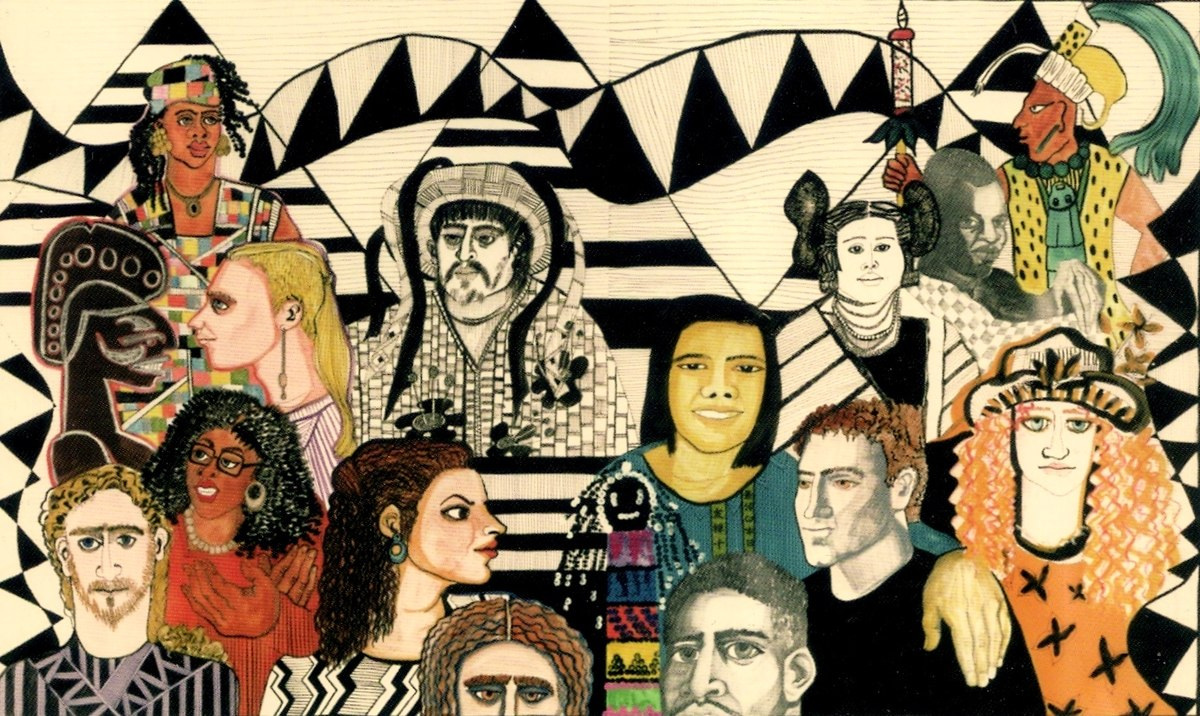
More classic art masterpieces used as illustrations
TL;DR:
Cultures have deep, often invisible layers that shape who people are and how they see the world. Like an iceberg, only a small portion of culture—behaviors and customs—is visible, while the vast majority—beliefs, values, and assumptions—lies hidden below the surface. Other analogies like concentric circles and an onion have been used to explain culture. Recognizing these layers and metaphors will encourage deeper cross-cultural understanding.

Culture is more connected to our sense of identity and self-understanding than we often imagine. Thinking about what we can see and understand of a culture, whether it be our own or that of another group of people, is similar to how we perceive an iceberg.
Think of the iceberg. Though logic tells us we are only seeing a very small portion of an iceberg above water, it's still hard to imagine that we are seeing such a small part of it. Indeed, almost 92% of an iceberg lies below the surface of the water. Similarly, many cultural elements, including beliefs, values, and underlying assumptions, lie hidden beneath the surface. We may not even be aware of how our culture dominates our value system and determines our view of life, our interpersonal relationships, and other aspects of daily life. The first known use of an iceberg as an analogy to illustrate how so much of culture is hidden below the surface was by Edward T. Hall in 1976.

Iceberg image modified from Gary R. Weaver, "Understanding and Coping with Cross-cultural Adjustment Stress" in Gary R. Weaver, editor, Culture, Communication and Conflict: Readings in Intercultural Relations, second edition (Simon & Schuster Publishing)
A concentric circle diagram illustrates how worldview is foundational to beliefs, how beliefs are then foundational to values and how values prompt behavior. Lloyd Kwast explains his diagram:
One helpful method to view a culture [is to visualize] several successive layers or levels of understanding as one [moves from observable behavior] into the real heart of the culture.
Values in a culture are not selected arbitrarily but invariably reflect an underlying system of beliefs. . .
At the very heart of any culture is its world view. . . Sometimes people who share the gospel cross-culturally fail to take the problem of worldview into account and are therefore disappointed by the lack of genuine change their efforts produce.

Diagram and quotes are taken from "Understanding Culture" by Lloyd Kwast, published in the second edition of Perspectives on the World Christian Movement, © by William Carey Library
To be sure, Lloyd Kwast's model of culture is, as Kwast himself admits, "far too simple to explain the multitude of complex components and relationships that exist in every culture." However, it can be a beginning point.

The image of an onion is often used to describe the different layers of culture. The outer layers are the artifacts and products as well as patterns of behavior. The next layers hold the beliefs, norms, and attitudes of that culture. The middle or core of the onion contains the underlying cultural assumptions and values.
Gerard Hendrik Hofstede created the model of the Cultural Onion. It is made of layers around a core like an onion. The core stands for the values of a certain culture, which is not moving a lot. It mostly remains the same. Even if something seems to be outdated, it still can subconsciously play a role in the present. The first layer around the core is that of rituals or patterns wedded to that culture. Those rituals change only slowly. On another layer are the "heroes." These can be either real or fictional people. They both reflect and influence the beliefs, norms, and attitudes of that culture. On the outside are the symbols and actions in momentary fashion in the culture. All the layers can be modified, re-trained, and re-learned. The core -- the inner values and assumptions of the culture -- is different.
-- Howard Culbertson, hculbert@snu.edu
What is a worldview?
To capture the richness of what we mean by culture, that concept has been described using a variety of analogies. Here are seven more of them:
This collection of analogies offers a variety of ways for us to think about the fluid complexity of culture. Each analogy or metaphor brings out something important. Together, these analogies can help us see how our culture influences us as individuals and as societies.